Are you looking to expand your knowledge of vegetables? Moving through the alphabet, here is a list of vegetables that start with C along with a description of each! You’ll find common vegetables such as cucumbers to the less common such as chicory.
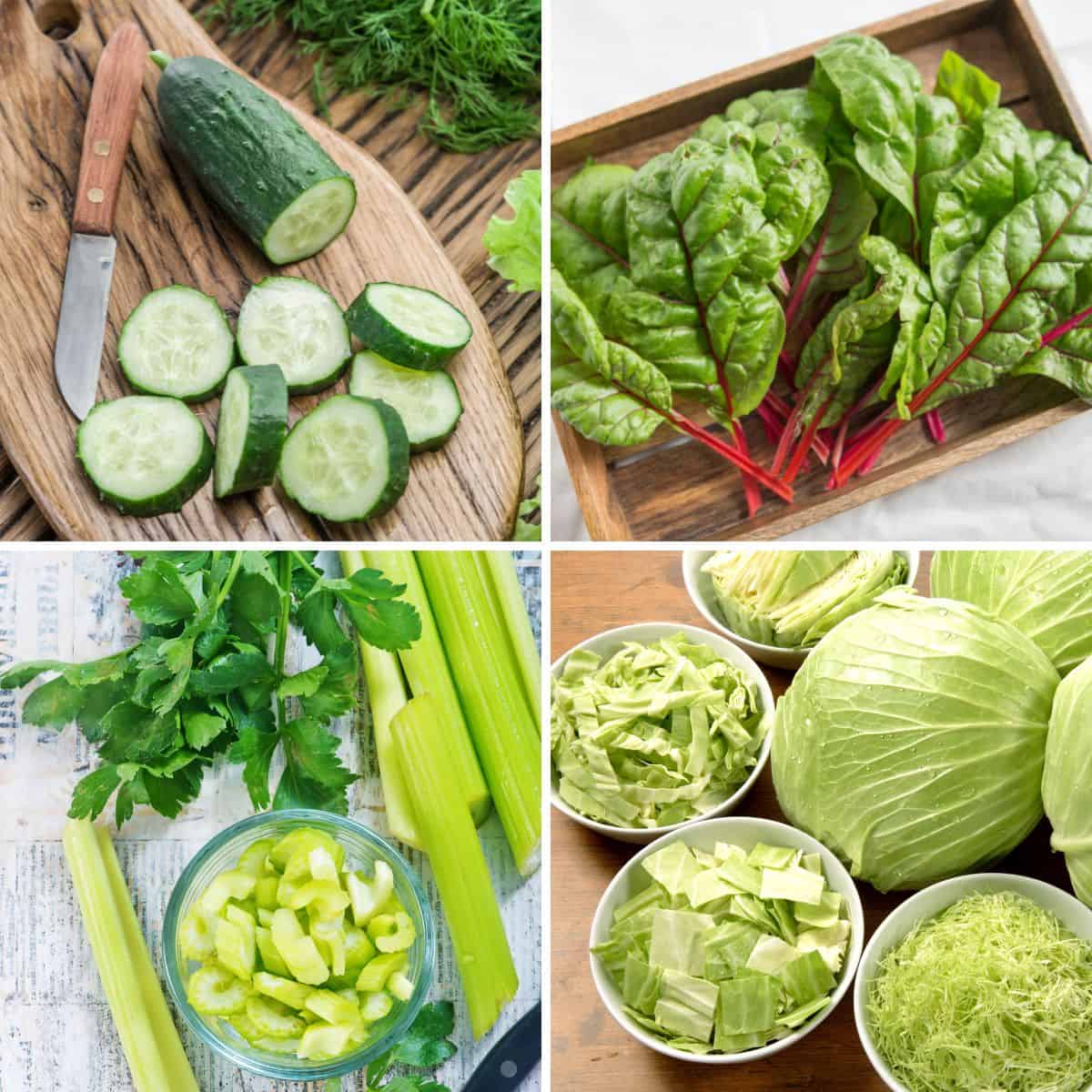
Learning about the various vegetables we have at our disposal is fun and exciting! You may be curious to learn about all the vegetables that start with C so that you can work your way through the alphabet and try something new, or perhaps you have a project, or you’re simply curious.
Whatever the reason, this complete list will provide you with everything you need to know about each vegetable, including links to recipes, so you can try them in your own kitchen!
If you are interested in more fruits and vegetables by the alphabet, be sure to check out these posts:
Vegetable Categories
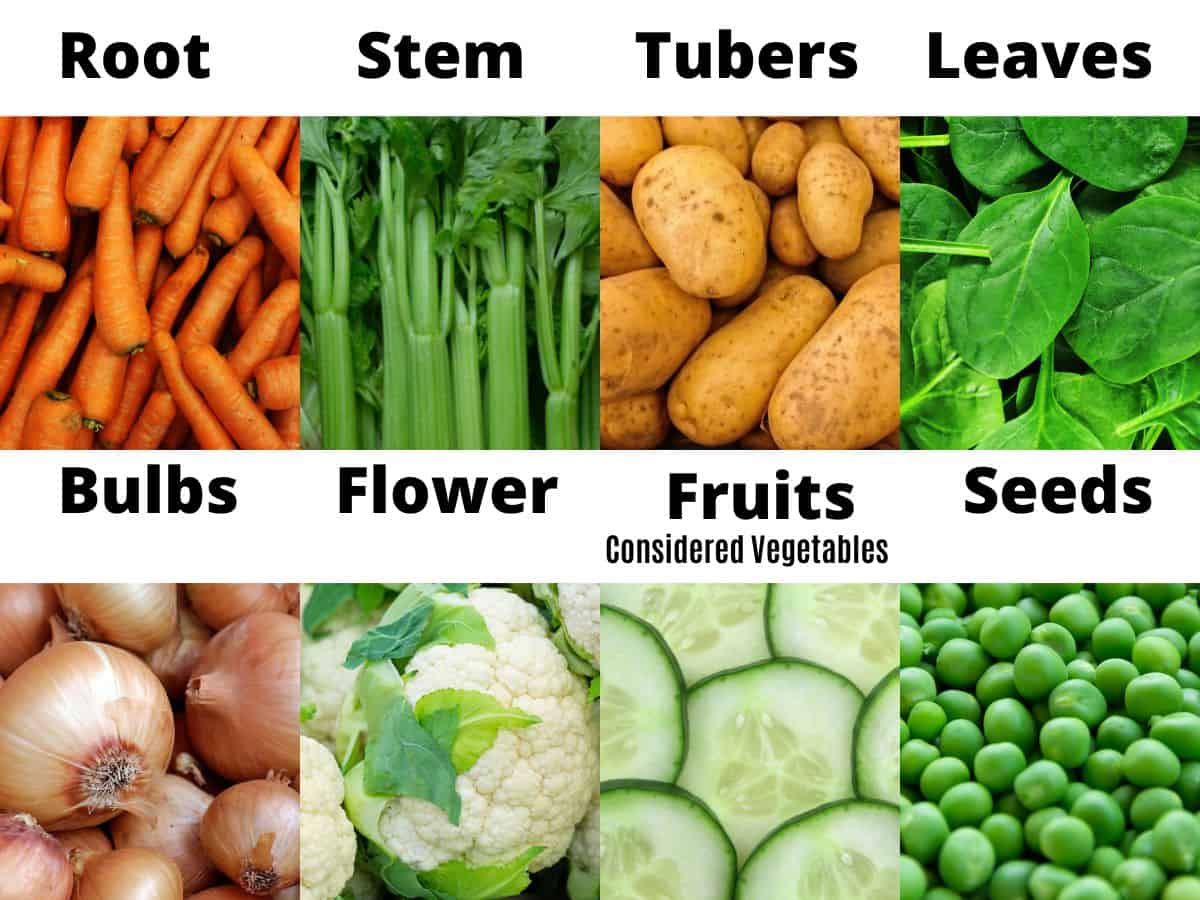
Before we get into the vegetables that start with C, let’s first get a better understanding of what exactly a vegetable is, and is not. Often we confuse some types of fruits with vegetables and vice versa. For example, often people consider tomatoes a vegetable when they are actually fruit.
There are 8 categories of vegetables.
- Root Vegetables
- Stem Vegetables
- Tubers
- Leaf and Leafy Stalk
- Bulb
- Head or Flower
- Fruits Commonly Considered Vegetables
- Seed Vegetables
Root Vegetables
Root vegetables are those that are grown underground. There are three main types of root vegetables that include tubers, and bulbs as all of these vegetables are grown underground, and the nutrient-dense part of the plant that is eaten is the root. They are generally starchy vegetables that are dense in nutrients with numerous health benefits. Examples of root vegetables include carrots, parsnips, and daikon radishes.
Stem Vegetables
Stem vegetables are those in which we consume the stem of the plant. Common stem vegetables include celery, rhubarb, and asparagus.
Tubers
Also grown underground, tubers are starchy vegetables such as potatoes, sweet potatoes, taro, and yams.
Leaf and Leafy Stalks
Leaf and leafy stalk vegetables are those such as spinach, collard greens, and kale to mention a few. Leafy green vegetables are high in nutrients such as iron, calcium, potassium, and magnesium.
Bulbs
Bulb vegetables are those that grow underground in a bulb shape. The large bulb of the plant is where nutrients are stored. These include vegetables like onions and garlic.
Head or Flower Vegetables
These types of vegetables are those in which you eat either the head or the flowering part of the vegetables. Cauliflower, broccoli, and artichokes.
Fruits Commonly Considered Vegetables
These include vegetables that are actually categorized as fruits because they have seeds. However, they have a more savory than sweet flavor. Some of these vegetables include cucumbers, bell peppers, and tomatoes.
Seed Vegetables
These are the vegetables in which the edible part of the plant is the seed. This includes peas and beans. These vegetables are excellent protein sources.
A List of 48 Vegetables that Start with C
Here is a simple list of all the vegetables that start with C. Scroll down to “More Information About Each Vegetable” for a description, how to eat this vegetable, and a link to a recipe!
- Cabbage
- Cactus
- Caigua
- Calabrese
- Camas
- Candy Roaster Squash
- Capers
- Capsicum
- Cardoons
- Carrots
- Cassava
- Catsear
- Cauliflower
- Cavolo Nero
- Celeriac
- Celery
- Celtuce
- Ceylon Spinach
- Cha-om
- Chard
- Chaya
- Chayote Squash
- Cherry Tomatoes
- Chickpeas
- Chicory
- Chickweed
- Chinese Artichoke
- Chinese Broccoli
- Chinese Eggplant
- Chinese Long Bean
- Chinese Mallow
- Chives
- Chili Peppers
- Choy Sum
- Chrysanthemum
- Cime de Rapa
- Collard Greens
- Common Bean
- Common Purslane
- Corn
- Corn Salad
- Cos Lettuce
- Courgette
- Courgette Flowers
- Cress
- Crookneck Squash
- Cucumber
More Information About Each Vegetable
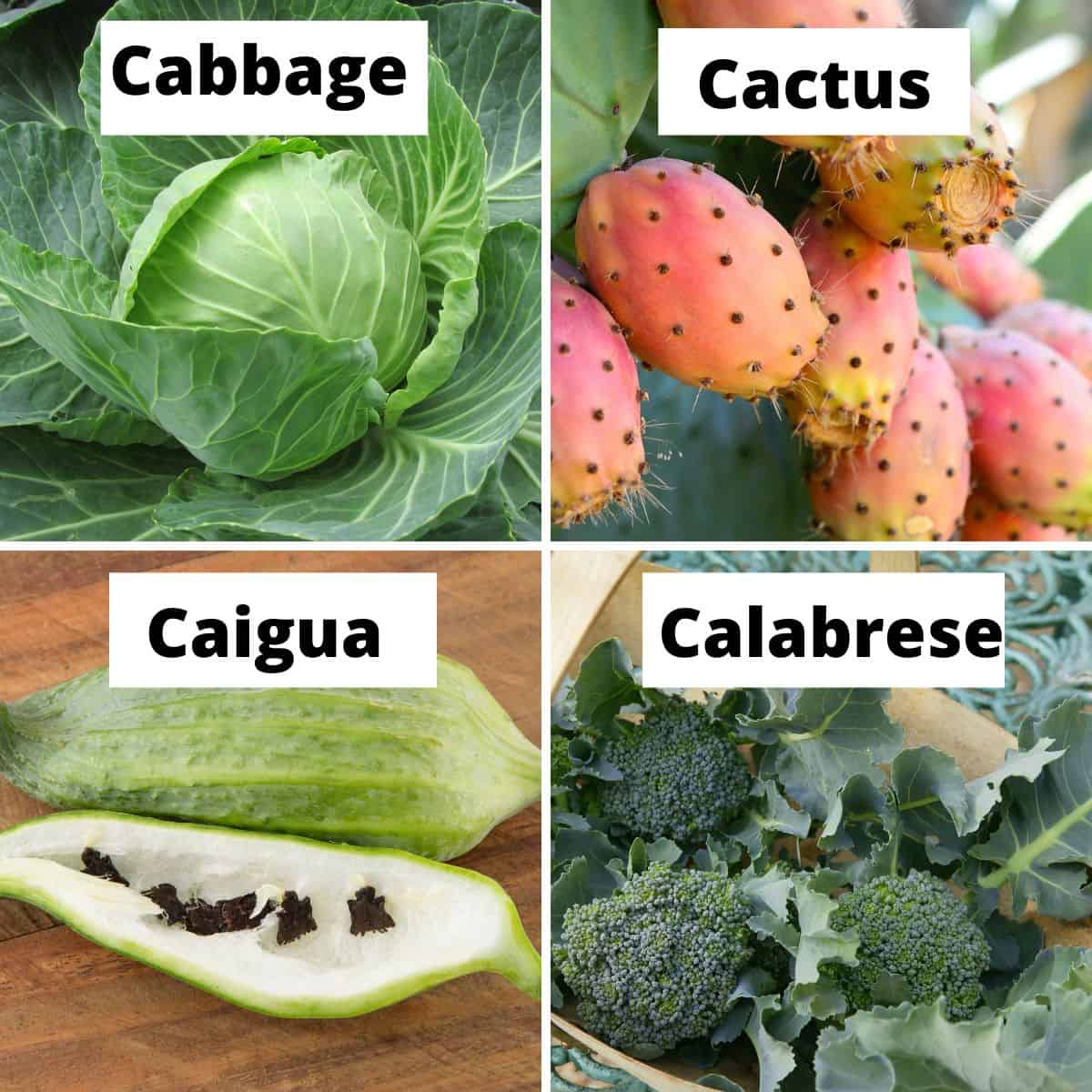
Cabbage
Cabbage is a cruciferous vegetable. It comes in a variety of colors and shapes. You may be most familiar with the typical white cabbage, but there is also red cabbage, as well as Napa cabbage that grows oblong like a head of romaine lettuce rather than in a ball-like white cabbage. Cabbage has numerous health benefits. It is packed with nutrients and is particularly high in vitamin C and fiber. Try this Vegan Chow Mein that uses shredded green cabbage.
Cactus
Typically, we don’t think of cacti as a vegetable that is edible. But a few types of cacti are used in recipes such as the prickly pear and saguaro cactus. They are most commonly used in Mexican and Southwestern cuisine as that is where they are predominately grown. They have an earthy flavor, that is a cross between watermelon, strawberries, and raspberries, and can be made into both savory and sweet recipes. The part of the cacti that you eat is the inside. Don’t try eating the prickly outer layer. Try this Prickly Pear Jelly!
Caigua
A small oval-shaped fruit, that is treated more like a vegetable, the internal seeds are edible and full of vitamins and nutrients such as vitamin C, potassium, magnesium, iron, and zinc. You can also scoop out the seeds, and eat the flesh. It is grown in Peru and used in Peruvian recipes. It is typically stuffed as we do with peppers. Caigua is an edible fruit.
Calabrese
Calabrese is a type of broccoli with a larger head that is a blue-green color. It tastes delicious steamed or used in any type of recipe that calls for broccoli such as broccoli salad, or broccoli and cheddar soup. Calabrese Broccoli is a cruciferous vegetable.
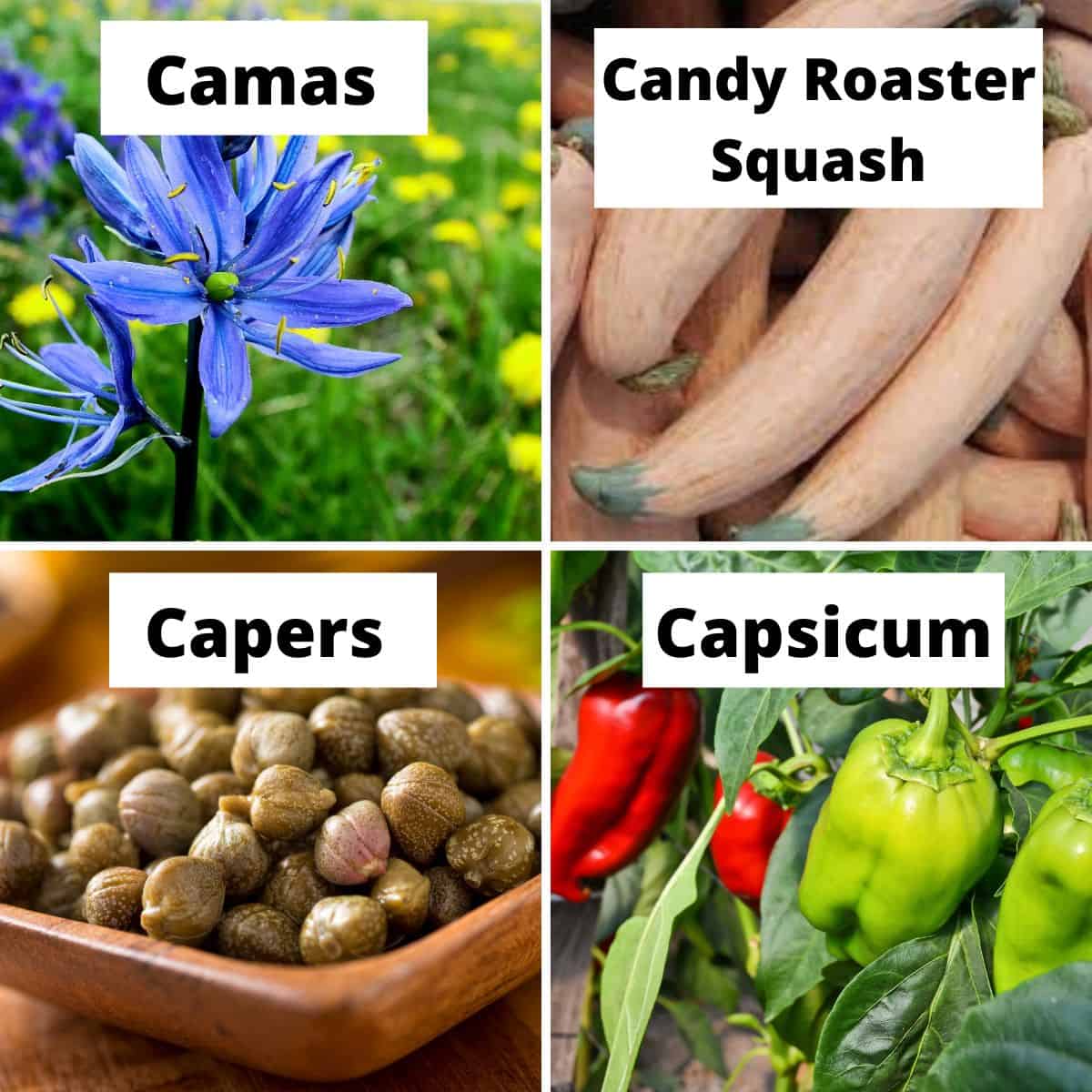
Camas
Camas is a root vegetable. It is also called wild hyacinth, or camash. The part of the camas that is edible is the root. However, not all camas are edible. There is one type called the deathcamas that is poisonous to humans. Native Americans used the bulbs to make bread or roast. They are found in the Pacific Northwest. Try this Roasted Blue Camas Bulbs recipe!
Candy Roaster Squash
The candy roaster squash ranges in color, and size. It can grow anywhere from 10-250 pounds, and the colors range from blue, orange, green, and pink. It has a banana-like shape. The flesh can be baked or fried, or even made into a pie! They were first used by the Cherokees. Try this recipe for Candy Roaster Squash for Sorghum, Walnuts, and Cranberries!
Capers
Capers are the buds of the Capparis Spinosa flower that have been dried and then preserved in a brine. They have a salty, tangy flavor. They are used in recipes to give them a zing of extra flavor, used to top salads, or added to sauces. Try this bruschetta recipe that uses capers and olives.
Capsicum
Also known as bell peppers, this fruit that is considered a vegetable comes in a variety of colors including green, red, orange, and yellow. The red, orange and yellow peppers have a slightly sweet flavor, whereas the green pepper has more of an earthy flavor. Bell peppers are used in a variety of soups, stews, stir-frys, salads, or stuffed. There are so many ways to enjoy them. Try these Vegan Stuffed Peppers!
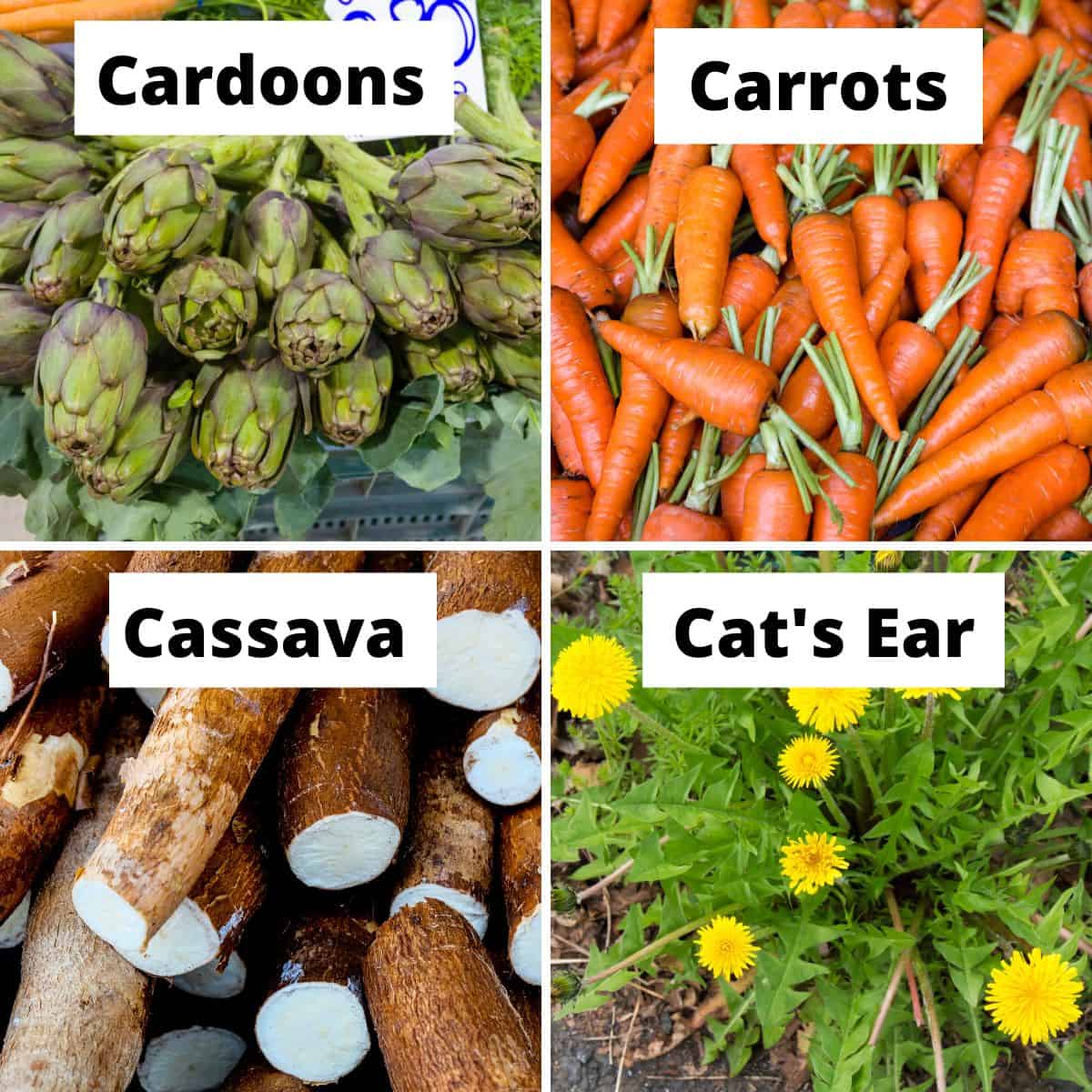
Cardoons
Cardoons are the edible stems of the artichoke thistle plant. They are thick and somewhat resemble celery stalks. They are popular in Mediterranean and North African cuisine. They must be cooked before eating, and have spikes on the outside, so handle with care. Try this recipe for Cardoons with Sicilian Olive Vinaigrette.
Carrots
This root vegetable is one of the most commonly known vegetables that start with C. While we most often associate them with the color orange, carrots come in a variety of colors including purple, white, and red. They are very nutritious and particularly high in vitamin A and beta-carotene. They can be enjoyed raw or cooked. Try this recipe for Air Fryer Roasted Rainbow Carrots!
Cassava
Cassava is another root vegetable also known as Yuka. It has a starchy consistency with a mild flavor. It is commonly used in Caribbean cuisine like we use potatoes in the United States. It is mashed, fried, baked, or turned into chips. Try this recipe for Creamed Cassava with Garlic.
Cat’s Ear
Cat’s Ear is a yellow flowering weed that you may see growing in your garden. It originated in Europe but now grows in the United States. Interestingly enough, each part of the plant can be eaten. Throw them into your salads or mix them into pasta like you would with greens! Try this Cat’s Ear Greens Pasta!
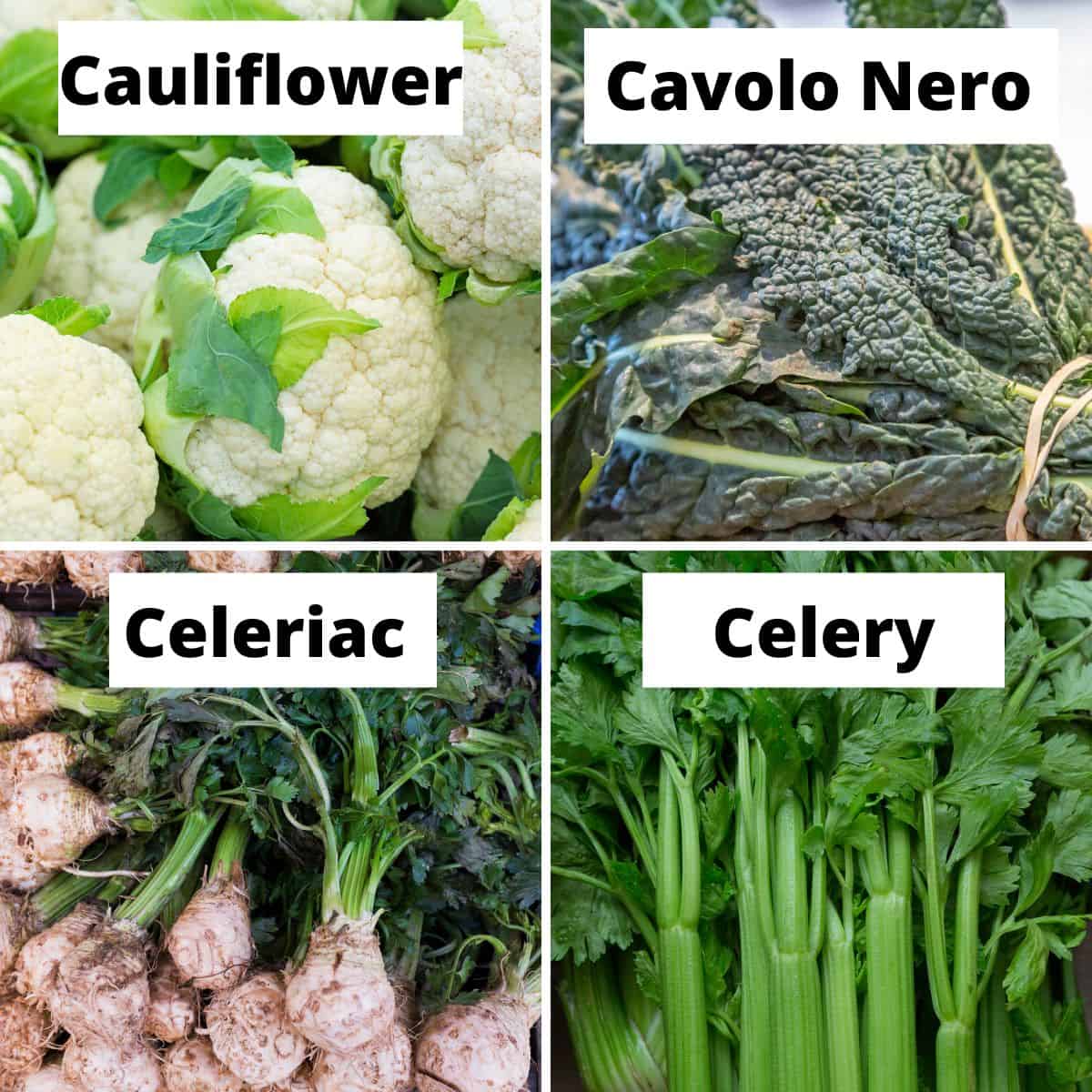
Cauliflower
One of the more popular “C” vegetables, cauliflower is a cruciferous vegetable. The edible parts are the stems and flowers. It is naturally high in fiber and B vitamins. There are so many recipes that include cauliflower, but one of my favorites is a roasted whole cauliflower head!
More cauliflower recipes…
Cavolo Nero
Cavolo Nero, commonly known as dinosaur kale, is a leafy green vegetable that has long dark green leaves. You can chop it and add it to salads, and smoothies, or sauté, boil, or throw it into your curries or stir-fries! Cavolo Nero is rich in vitamins and minerals such as vitamins K, C, and B6 as well as manganese, copper, calcium, and magnesium. Try this simple Cavolo Nero Sauté!
Celeriac
Celeriac (aka celery root) is a large ball-shaped root vegetable. Like cassava, it can be mashed, fried, roasted, or sautéd. It has a mild celery flavor and a starchy finish. It has antibacterial properties and can help alleviate stomach pain while stimulating the digestive tract. Try this recipe for Sautéd Celeriac!
Celery
Celery and celery root (celeriac) is not the same plant. Celeriac is a type of celery that is grown for its root, while celery is grown for its stems. Celery is rich in vitamins A, K, and C, as well as minerals like potassium and folate. You can enjoy it as a raw snack, or try this recipe for Celery Juice!
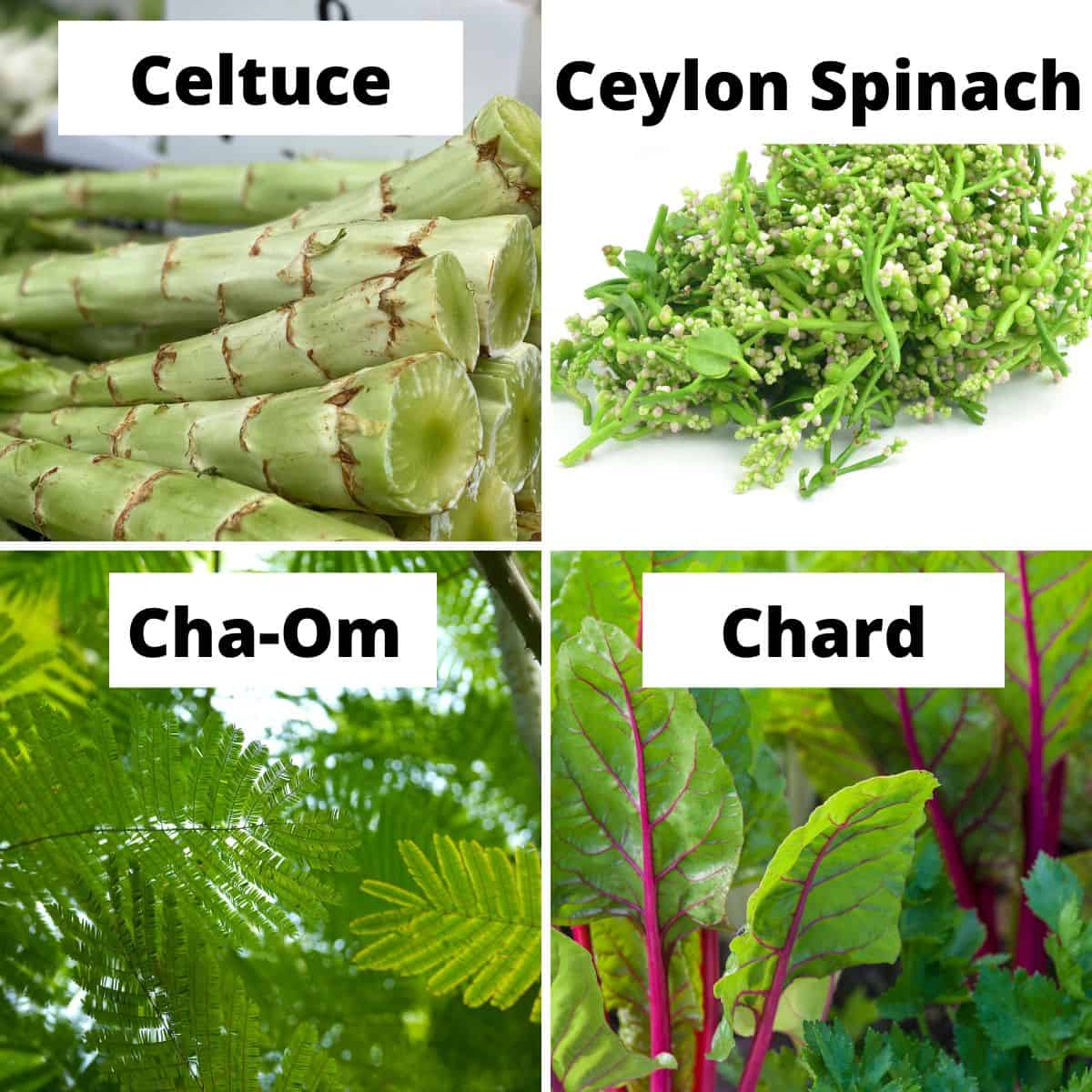
Celtuce
Celtuce is grown for its thick stem. You will find it most often in Chinese grocery stores. It goes by many names including “stem lettuce,” “asparagus lettuce,” or “celery lettuce.” The stem looks similar to the stalk of broccoli. Before eating, be sure to peel the touch exterior. You’ll be left with a mild, and nutty vegetable that has a hint of smokiness. Try this recipe for Stir-Fried Celtuce!
Ceylon Spinach
Also called Malabar spinach, this spinach variety grows quickly and is native to India and tropical regions. It is a climbing vine plant that is a good source of vitamins A and C, folate, manganese, and iron. You can cook it like you would regular spinach. Try this Ceylon Spinach Chutney!
Cha-om
These edible leaves from the Thai Acai Tree have a bitter and nutty flavor. They are native to Southeast Asia. The leaves are eaten, while the stems are not, as they can become tough and thorny. Add these leaves to soups, curries, and stir-fries. They are often used in Thai cuisine like this Vegan Thai Omelet.
Chard
Colorful chard or Swiss chard is one of my favorite leafy greens to cook with. It is distinguished by its long colorful stalks that come in shades of red, yellow, purple, and orange. Chop it up and add it to your stews, or sauté for a simple side dish. Chard is best cooked, at least when the leaves are large, as they can be quite tough. However young chard can be eaten raw. Try this Easy Chard Recipe with Garlic.
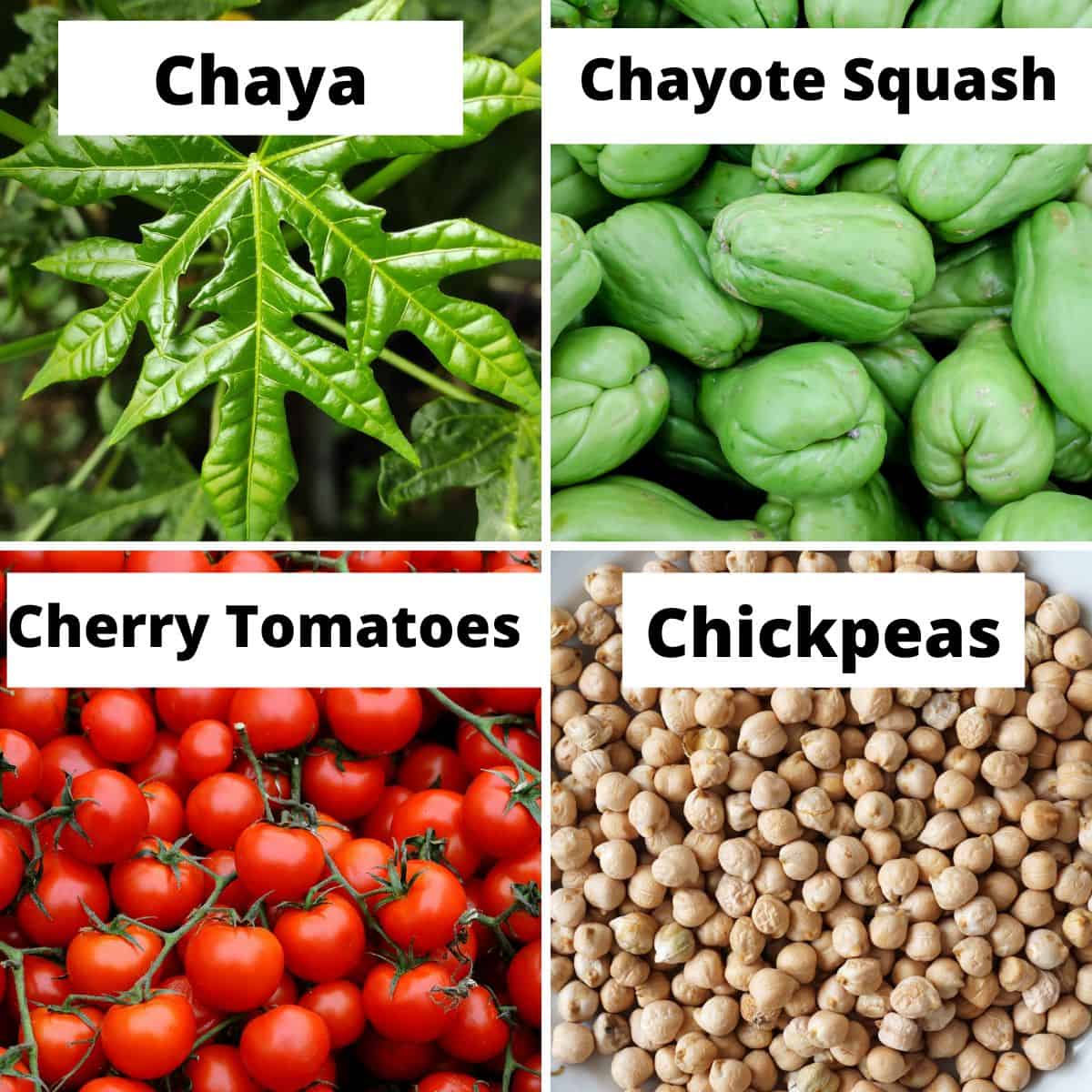
Chaya
Chaya is a leaf similar to spinach. However, unlike spinach, it must be cooked before eating because it contains hydrocyanic acid. It’s traditionally used in Mexico and Central America for medicinal purposes. It can treat inflammation, heart disease, and other chronic conditions. Try these Chapya Tamales!
Chayote Squash
Chayote squash looks somewhat like a lumpy green pepper that has more of an oblong shape. It is grown in Mexico and Central America. It has a mild flavor that is somewhat similar to cucumber but is crisp like jicama. Try this Chayote Squash with Tomatoes and Green Chilies.
Cherry Tomatoes
Cherry Tomatoes are sweet and plump. Perfect for salads! Since they have seeds they are technically a fruit. Add them to your favorite salads, or roast them and toss them in your Pasta. They are also delicious eaten fresh and raw for a snack. Try this simple Italian Cherry Tomato Salad with Basil!
Chickpeas
This seed is an excellent source of protein, fiber, and minerals such as iron, phosphorous, and folic acid. You can find it canned or dried. Also called the garbanzo bean, chickpeas are extremely versatile. You can use them in a dessert like this Vegan Blondie, add them to your favorite curry, make them into chickpea patties, toss them into your salads, and of course use them to make homemade hummus!
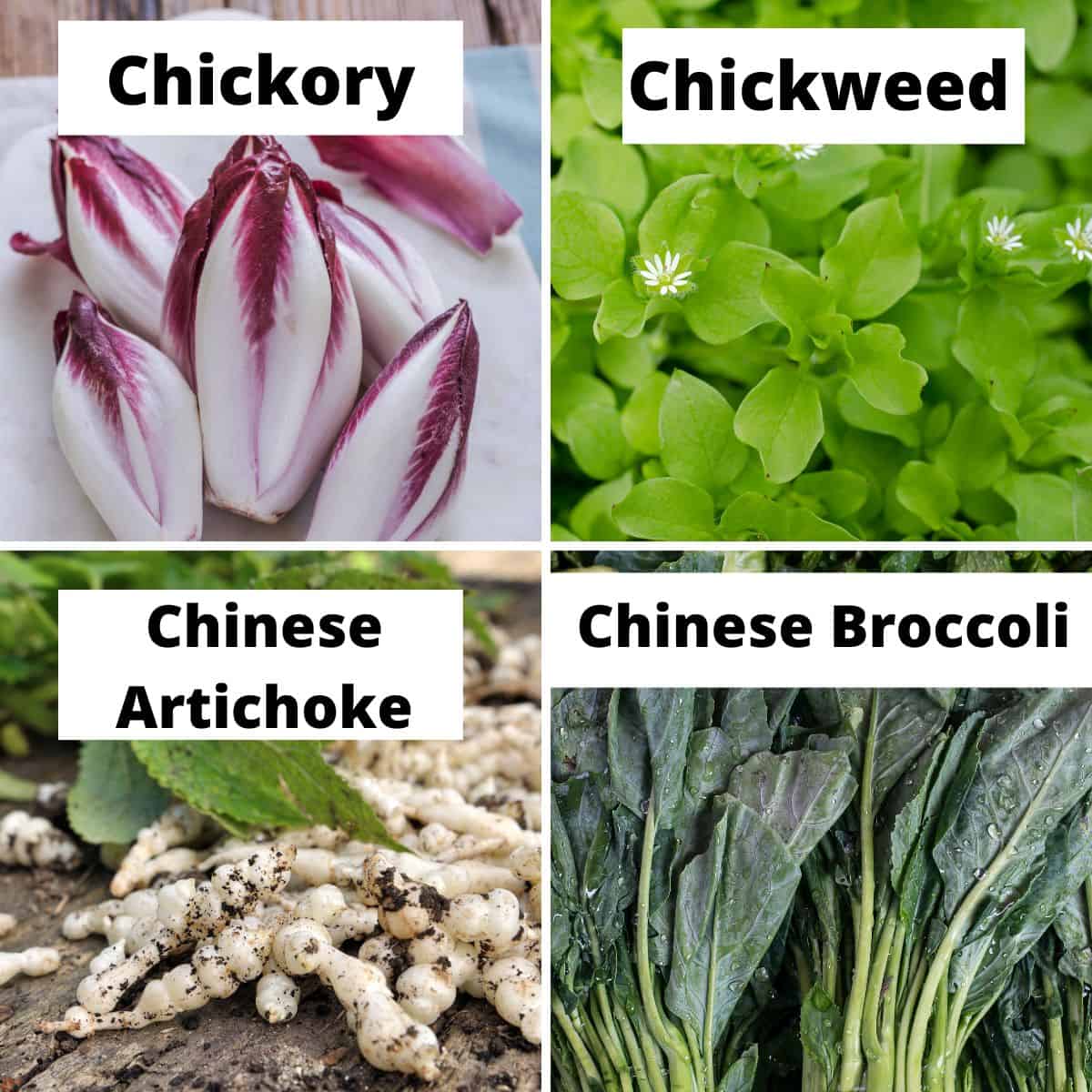
Chicory
Chicory is a flowering blue plant. The flower is sometimes used for medicinal purposes, while the roots are used to make, and the leaves are used in salads. Chicory coffee is a popular alternative to regular coffee. Try this simple Chicory Salad!
Chickweed
Ad edible leaf, first grown in Europe, chickweed is now a widespread weed in the United States. It has a mild flavor and can be eaten raw. Add to your favorite sandwiches, salads, or wraps. It can also be enjoyed cooked in the same way you would prepare spinach. Try this delicious recipe for Chickweed Pesto!
Chinese Artichoke
The Chinese Artichoke is a root vegetable that has a nutty flavor. It’s used as both an herb and medicinal plant. This vegetable is popular in Asian cuisine, hence its name, the Chinese Artichoke. It’s also known as Crosone. It’s a rather invasive plant, so if you’re growing it in your garden it can easily take over. Try this simple Chinese Artichoke Soup!
Chinese Broccoli
Similar to regular broccoli, Chinese Broccoli, is a leaf vegetable that has a thick stem, and a flowering head like broccoli only much smaller. It’s blue-green leaves are delicious, along with the stem and the head. It tastes best sautéd, or boiled. Try this Chinese Broccoli Stir-Fry.
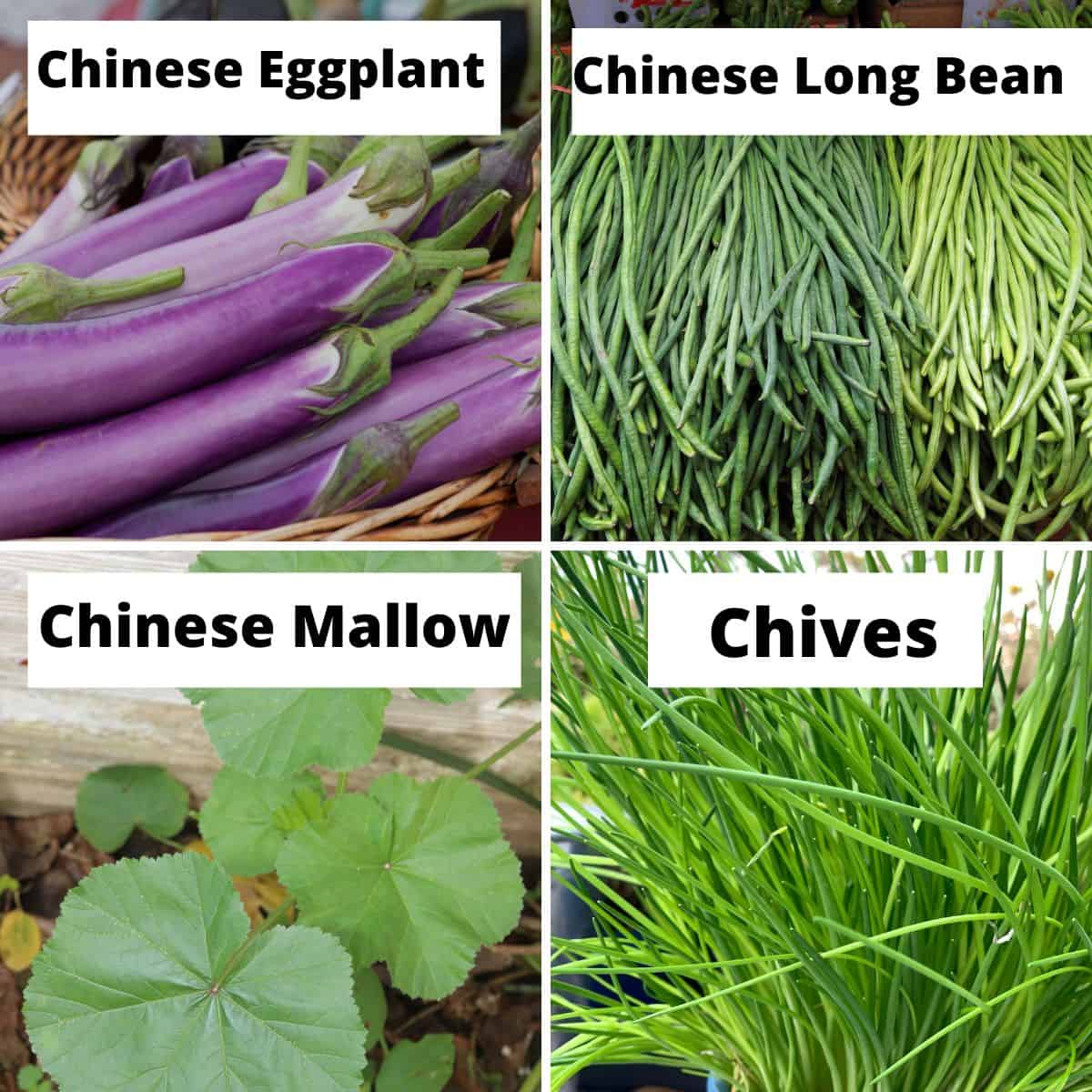
Chinese Eggplant
The difference between regular eggplant and Chinese Eggplant, is that Chinese eggplant is longer and thinner with a light purple color. They have a mild and sweet flavor. It has fewer seeds than a regular eggplant, with a sweeter flavor. It is a good source of manganese, potassium, and vitamin B6. Try this recipe for Chinese Eggplant in Garlic Sauce.
Chinese Long Bean
The Chinese Green Bean is also called the snake bean. It looks like a very long green bean. They can be eaten cooked or raw. Unlike the green bean, it does not have a sweet finish, instead is more earthy. Try this recipe for Sichuan Style Stir-Fried Long Beans.
Chinese Mallow
Chinese Mallow is an herbaceous plant. The seeds are used for medicinal purposes, while the leaves are used in recipes. The leaves can be added to soups, or cooked simply by steaming or sautéing. Mallow has been used for a variety of health concerns such as dry coup, soothing the throat, and relieving constipation. Try this recipe for Sautéd Mallows with Onions.
Chives
This herbaceous plant grows long grass-like leaves. They have a slight onion flavor and are delicious to add to salads, or as a garnish to other savory recipes. They are also often used to heighten the flavor of soups and stews. Try adding them to your favorite mashed potatoes recipe!
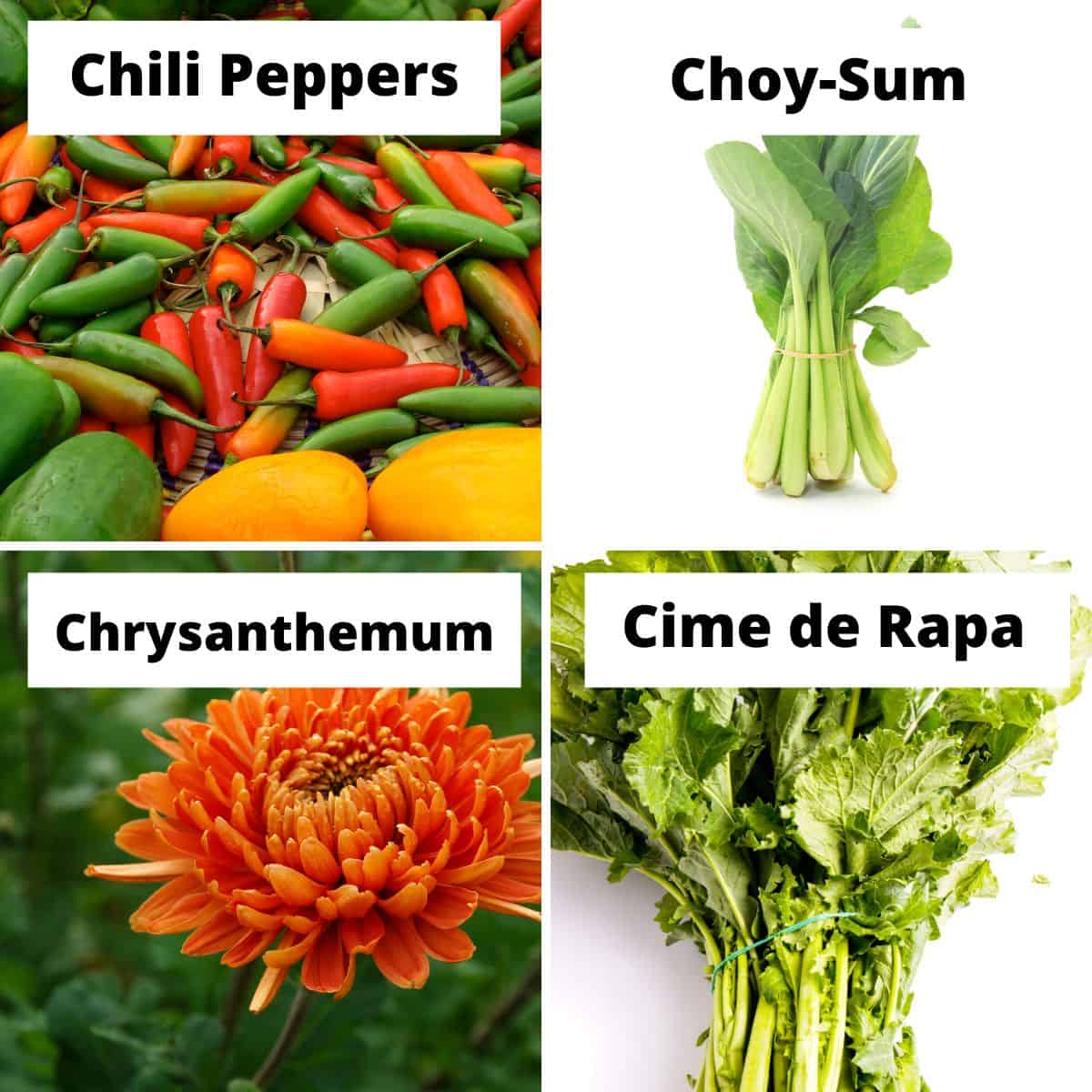
Chili Peppers
This fruit is a member of the nightshade family. There are many varieties of chili peppers that range from mild to spicy in flavor. Chili peppers were first grown in parts of Mexico, and are popular in Mexican cuisine. Add some chili peppers to this Vegan Chipotle Bowl!
Choy Sum
Choy Sum is leaves that are popular in Chinese cuisine. It is also called Chinese Flowering Cabbage. It can be enjoyed raw, cooked in stir-frys, or steamed. It is a good source of folate and vitamin B6, beta-carotene, fiber, calcium, and iron. Try this Blanched Choy Sum with Garlic Sauce!
Chrysanthemum
Chrysanthemums are beautiful flowers, but they are not only decorative, they can also be enjoyed. Chinese and Japanese dishes sometimes use the green parts of the plant in recipes. Try this recipe for Chrysanthemum Leaves with Sweet Sesame Dressing.
Cime de Rapa
Also known as turnip greens, Cima de Rapa is the leafy top of broccoli rabe. They have a very strong flavor. They are popular to use in Italian cuisine. They are best enjoyed cooking to reduce some of the bitter flavors. Try this recipe for Orecchiette Con Le Cime de Rapa, a popular Itailian pasta dish.
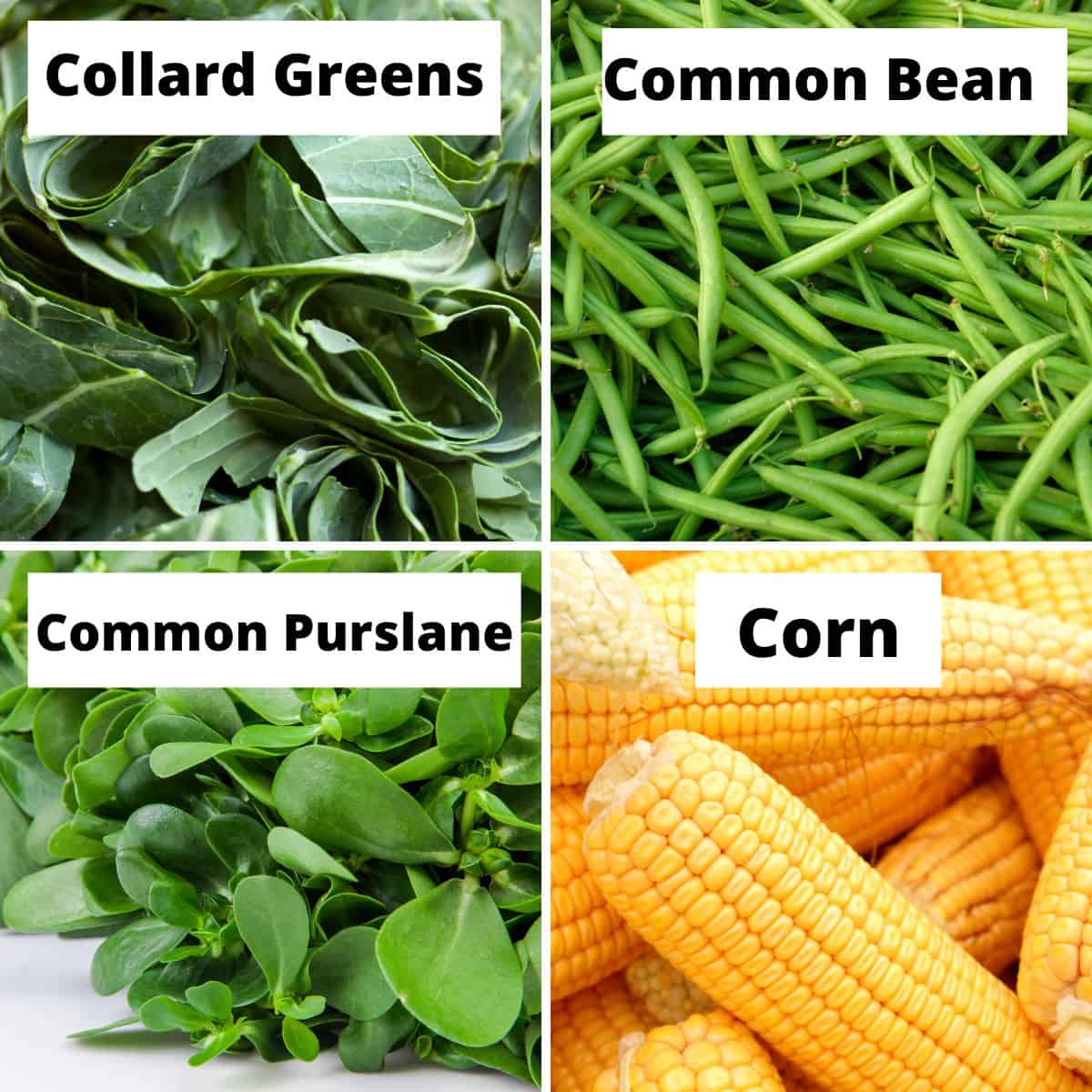
Collard Greens
Collard greens are large tough leaves that are used often in Southern cooking. They belong to the cabbage family and have a flavor similar to cabbage or kale. Since the leaves are tough, they are best enjoyed cooked. They are a good source of vitamin A and vitamin C. Try them in this recipe, Vegan Collard Greens!
Common Bean
The Common Bean or French Bean is the typical green bean you find in your grocery store. They have a slightly sweet flavor and can be enjoyed raw, cooked, steamed, or sautéd. They are a good source of vitamins, A, C, and K. Try this traditional recipe for, Green Bean Casserole!
Common Purslane
Common Purslane has a variety of names. It is widely grown, and all parts of the plant are edible, from the leaves, stems, and even flowers. It has a tart and salty flavor. It can be enjoyed raw in salads, but you can also add it to your favorite soups and stews. It is a particularly good source of vitamin A. Try this simple Common Purslane Salad!
Corn
One of my kids’ favorite vegetables, this starchy vegetable is eaten for its seeds. It is a good source of fiber, vitamin C, thiamine, and folate. It is widely grown and used in a wide variety of foods. I enjoy it best cooked, and eaten fresh off the cob! Try this recipe for Air Fryer Corn on the Cob!
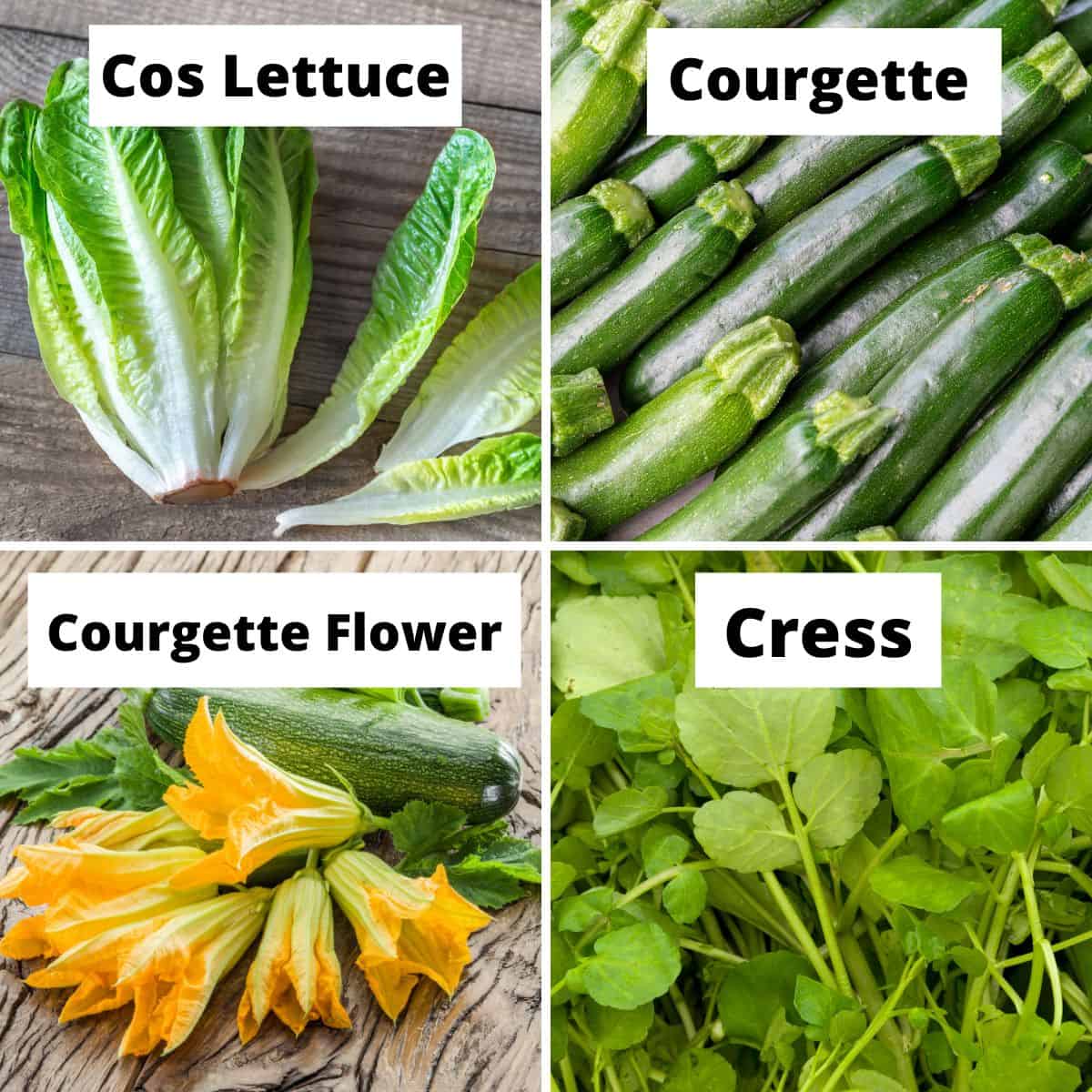
Cos Lettuce
Cos lettuce is the British name for Romaine lettuce. It is called Cos lettuce because it is said to have originated from the Greek island of Cos. It has a tall head and long leaves. It is great lettuce to use during the summer months because it handles the heat without wilting quickly. It is most popularly used in Caesar Salad.
Courgette
This fruit, also known as zucchini in the United States, has a mild flavor. It grows in the summer and can be used in a variety of recipes from sweet quick bread, sautés, and even stuffed. It is an excellent source of vitamin C and B6. Try these courgette recipes, Air Fryer Courgette, and Stuffed Courgette.
Courgette Flowers
The flower of the courgette plant can also be eaten. You can add it to your salads, or even stuff and fry it! Try this recipe for Courgette Blossoms.
Cress
Cress is a leafy spring plant that has a zesty flavor. It is eaten raw and added to salads. There are a few different varieties including American Cress, Winter Cress, and Watercress. Try this recipe for Gingered Cress!
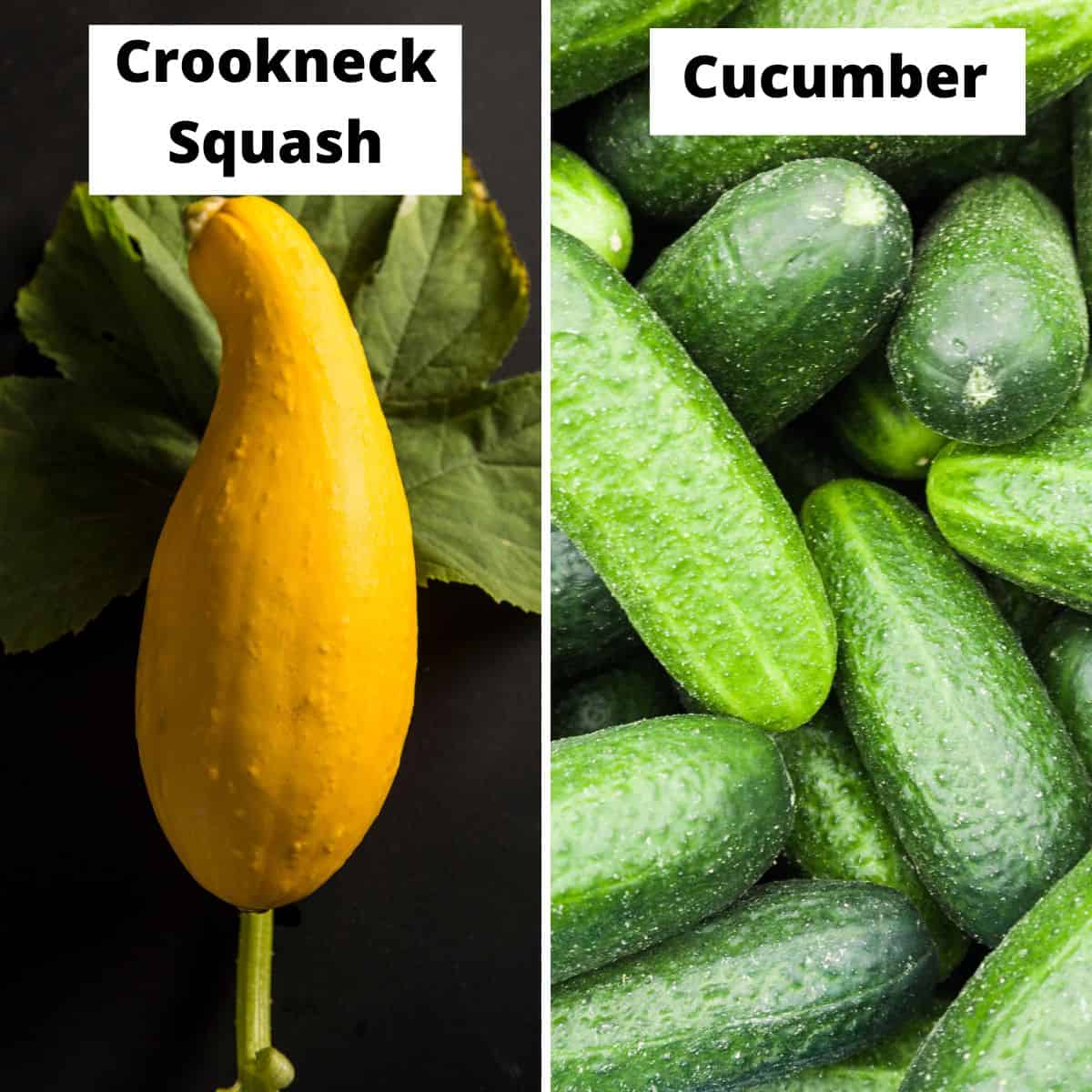
Crookneck Squash
Crookneck squash also known as yellow squash, is a small yellow squash that has a curved neck. It is a fruit and part of the larger squash family. It can be eaten raw or cooked. I enjoy it added to pasta like in this Pesto Pasta with Spring Vegetables.
Cucumber
This refreshing fruit has a crisp and mild flavor. It is not typically cooked, rather eaten raw. It’s an excellent source of vitamin K, along with vitamins B, and C. Add this vegetable to your salads, eat it as a snack, or dip it into your favorite spreads. Try this recipe for Mediterranean Cucumber Salad!
Final Thoughts On Vegetables That Start With C
There are so many vegetables that start with C. All of them have their own unique flavor profile and nutritional content. Give some of these more unique vegetables a try, and expand your palette. If I missed any vegetables, comment below, and I will be happy to add them. If you have any additional questions, please don’t hesitate to ask.
More Cooking and Food Tips!
Please comment below if you found this article helpful or have any additional questions. You can also follow me on Instagram, Pinterest, and Facebook for more family-friendly vegan recipes!


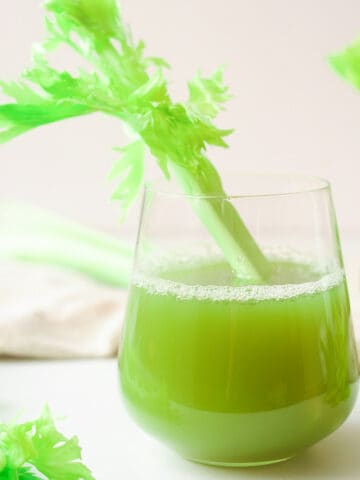



Leave a Reply